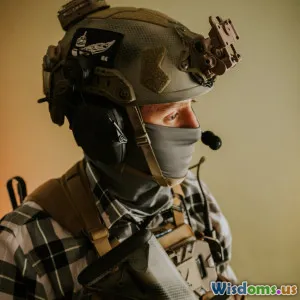
Preparing for Future Warfare with Simulations
5 min read Explore how military simulations are reshaping future warfare strategies and training methodologies for enhanced preparedness. (0 Reviews)
Preparing for Future Warfare with Simulations
As the landscape of warfare continues to evolve, military organizations worldwide are harnessing the power of advanced simulations to prepare for future conflicts. These simulations provide invaluable insights into combat scenarios, strategic planning, and operational readiness. In this article, we will explore the various types of military simulations, their benefits, and how they are redefining preparations for modern warfare.
1. The Importance of Simulations in Military Training
Military simulations serve as critical tools for training and operational planning. They allow soldiers to engage in realistic scenarios without the physical risks associated with live exercises. Through simulations, military personnel can practice tactics, refine strategies, and enhance decision-making skills in a controlled environment. The integration of technology into these simulations has made them more interactive, immersive, and effective than ever before.
1.1 Types of Military Simulations
There are several types of military simulations, each designed to serve specific training objectives:
- Live Simulations: Involve real troops and equipment engaging in exercises. These can include field training exercises where soldiers practice tactics in real-world environments.
- Virtual Simulations: Use computer-generated environments to replicate combat scenarios. Soldiers can interact with a virtual battlefield, allowing for complex scenario planning and execution.
- Constructive Simulations: Focus on modeling and simulation of military operations without physical movement. These simulations often involve computer algorithms to manage large-scale operations and assess outcomes.
2. Enhancing Realism with Advanced Technologies
Modern military simulations leverage advanced technologies such as virtual reality (VR), augmented reality (AR), and artificial intelligence (AI) to create more realistic training environments. For example, VR allows soldiers to immerse themselves in a 360-degree battlefield, enhancing their situational awareness and reaction times. AR can overlay critical information onto the real world, aiding decision-making during training exercises.
2.1 Case Studies of Successful Implementation
Countries like the United States and Israel have already integrated sophisticated simulation technologies into their military training programs. The U.S. Army's Synthetic Training Environment (STE) aims to create a unified training platform that can replicate any operational environment, accommodating various training needs.
Israel's use of simulation for urban warfare training has proven effective in preparing soldiers for real-world scenarios, allowing them to practice tactics in environments that mimic actual cities.
3. The Strategic Advantage of Simulations
Implementing simulations in military training not only enhances individual skill sets but also improves overall unit cohesion and operational effectiveness. Simulations enable commanders to test and refine strategies based on real-time data and feedback, leading to better decision-making in high-stakes situations.
3.1 Cost-Effectiveness
In addition to improving training outcomes, simulations can significantly reduce costs associated with live training exercises. By minimizing the need for ammunition, fuel, and other resources, military organizations can allocate their budgets more effectively while still providing high-quality training.
4. The Future of Military Simulations
As technology continues to advance, the future of military simulations looks promising. The integration of AI will enable simulations to become even more adaptive, providing soldiers with personalized training experiences. Furthermore, as virtual and augmented reality technologies evolve, we can expect simulations to become more immersive and realistic, better preparing soldiers for the complexities of future warfare.
Conclusion
Preparing for future warfare requires innovative approaches, and military simulations are at the forefront of this transformation. By embracing advanced technologies and methodologies, military organizations can enhance their training programs, improve operational readiness, and ultimately, ensure that they are prepared for the challenges of modern combat. The ongoing evolution of military simulations will play a vital role in shaping the future of warfare, making it essential for armed forces worldwide to invest in these critical tools.
Rate the Post
User Reviews
Popular Posts





















